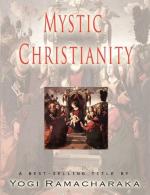We have to say here, at this point, that we have no sympathy for the so-called “infidel” opinion, which holds that the whole tale of the Virgin Birth was invented to conceal the illegitimate birth of Jesus. Such a view is based neither on intelligent investigation or criticism, or upon the occult teachings. It was merely “invented” itself, by those who were unable to accept current theology and who, when driven from the churches, built up a crude system of reconstructed Biblical History of their own. And so we shall not stop to even consider this view of the matter, but shall pass on to the scholarly objectors and their views and thence to the Occult Teachings.
In the first place, the theologians who favor the views of the Higher Criticism object to the idea of the Virgin Birth upon several general grounds, among which the following are the principal ones:
(1) That the story of the Divine Conception, that is the conception by a woman of a child without a human father, and by means of a miraculous act on the part of Deity, is one found among the traditions, legends and beliefs of many heathen and pagan nations. Nearly all of the old Oriental religions, antedating Christianity by many centuries, contain stories of this kind concerning their gods, prophets and great leaders. The critics hold that the story of the Virgin Birth and Divine Conception were borrowed outright from these pagan legends and incorporated into the Christian Writings after the death of Christ;
(2) that the idea of the Virgin Birth was not an original Christian Doctrine, but was injected into the Teachings at a date about one hundred years, or nearly so, after the beginning of the Christian Era; this view being corroborated by the fact that the New Testament Writings themselves contain very little mention of the idea, the only mention of it being in two of the Gospels, those of St. Matthew and St. Luke—St. Mark and St. John containing no mention of the matter, which would not likely be the case had it been an accepted belief in the early days of Christianity—and no mention being made of it in the Epistles, even Paul being utterly silent on the question. They claim that the Virgin Birth was unknown to the primitive Christians and was not heard of until its “borrowing” from pagan beliefs many years after. In support of their idea, as above stated, they call attention to the fact that the New Testament writings, known to Biblical students as the oldest and earliest, make no mention of the idea; and that Paul ignores it completely, as well as the other writers;
(3) that the Gospels of St. Matthew and St. Luke bear internal evidences of the introduction of the story at a later date. This matter we shall now consider, from the point of view of the Higher Criticism within the body of the Church.
In the first place, let us consider the Gospel of St. Matthew. The majority of people accept this




